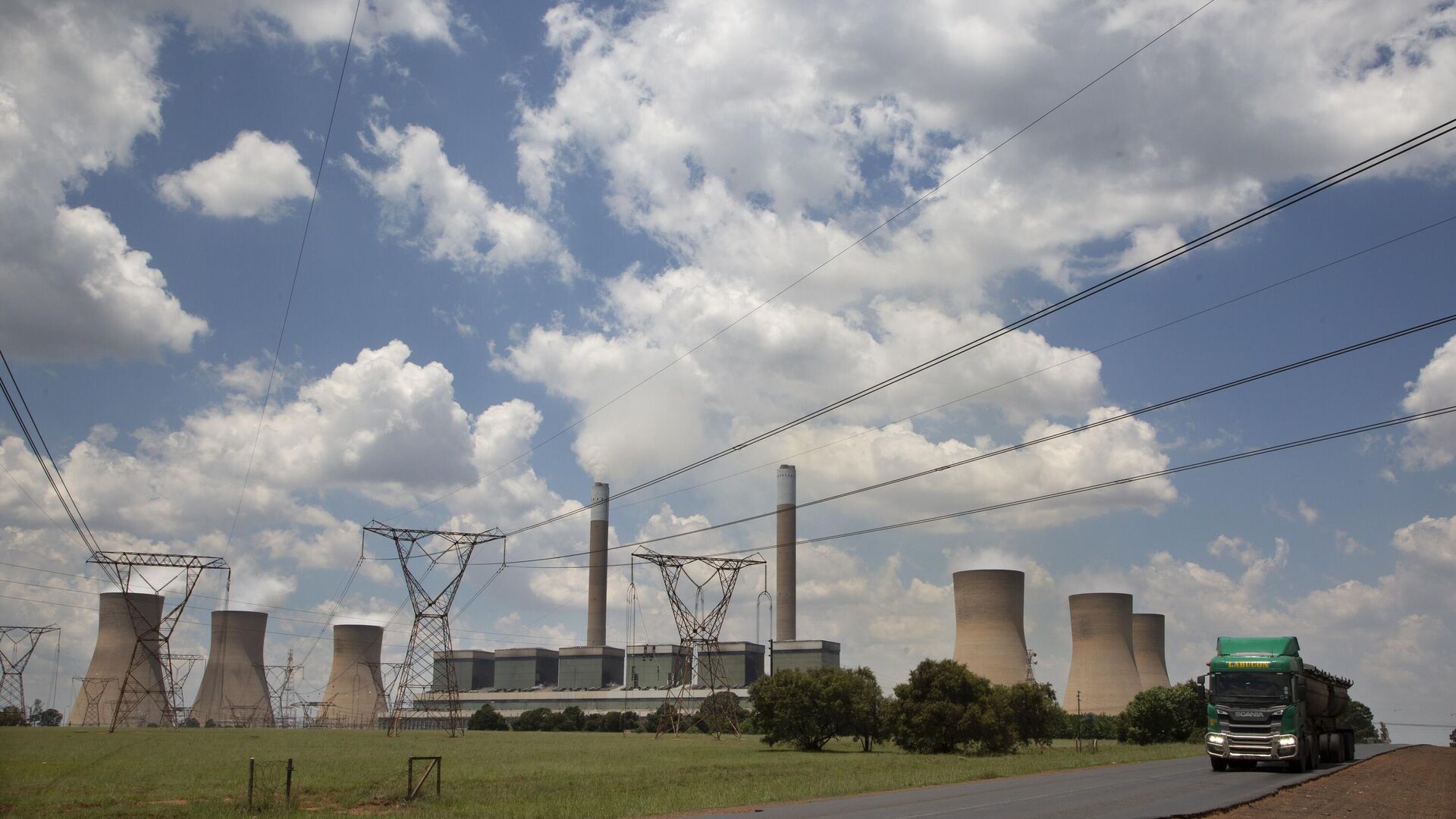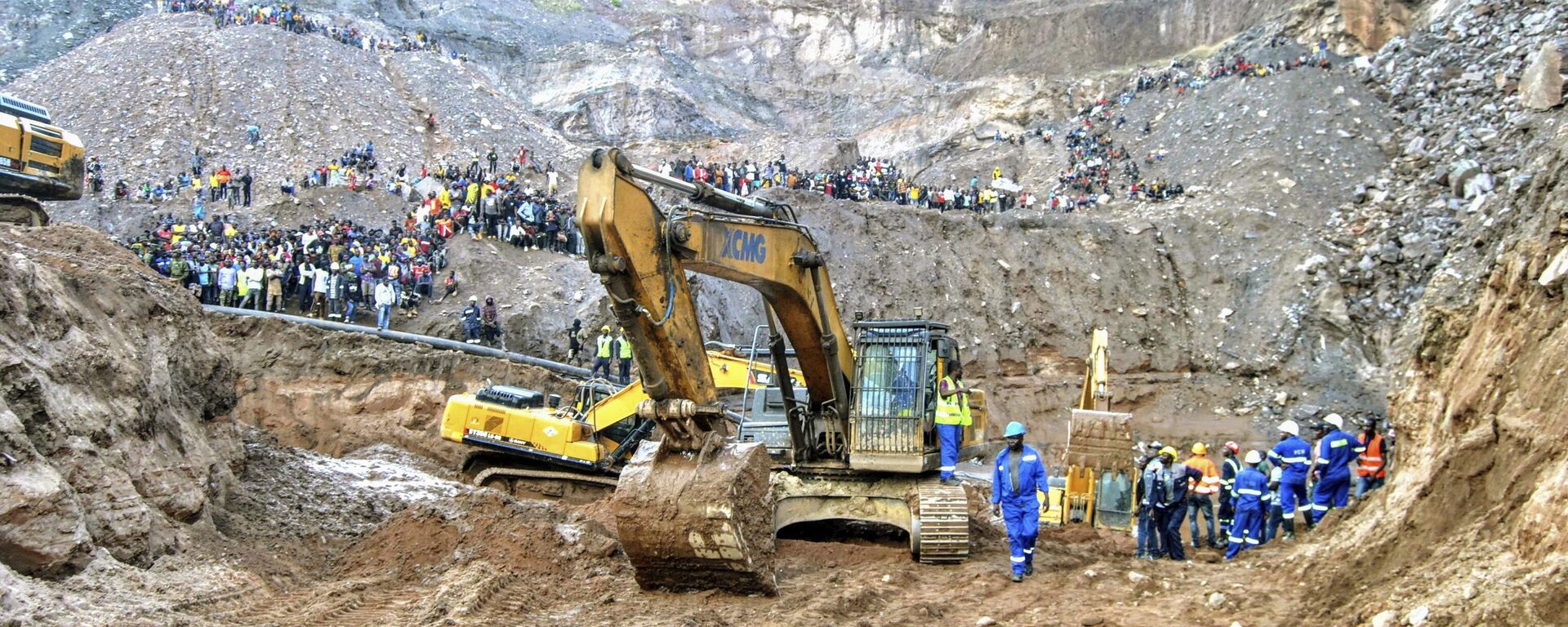https://en.sputniknews.africa/20240913/zambian-copper-mines-seek-unexpected-solution-for-power-needs-1068268178.html
Zambian Copper Mines Seek Unexpected Solution for Power Needs
Zambian Copper Mines Seek Unexpected Solution for Power Needs
Sputnik Africa
In February, the Zambian government declared a national disaster and emergency due to a drought triggered by the El Nino climate phenomenon. The lack of... 13.09.2024, Sputnik Africa
2024-09-13T17:28+0200
2024-09-13T17:28+0200
2024-09-13T18:42+0200
sub-saharan africa
zambia
south africa
southern africa
eskom
electricity
energy
drought
el nino
weather
https://cdn1.img.sputniknews.africa/img/07e8/07/06/1067404089_0:178:3008:1870_1920x0_80_0_0_c87affd590e59b01ba5759d15f6dc954.jpg
Zambia’s largest copper mines are turning to South Africa’s Eskom for power as the country grapples with a severe energy shortage caused by a historic drought, Anthony Mukutuma, a director at First Quantum’s Zambian unit, told Bloomberg on Friday.Eskom, which previously had faced significant production deficits until March this year, has been supplying 250 megawatts to Zambia since August, covering more than 10% of the country’s typical demand. First Quantum, responsible for about half of Zambia’s copper output, expects to maintain an uninterrupted supply, thanks to imports from Eskom and deals with Africa GreenCo.Earlier, Zesco, the state-owned electricity provider, informed mines that 40% of their normal power supply would be subject to emergency restrictions, forcing operators to source power from neighboring countries.Some relief may be in sight as the government expects normal to above-normal rainfall starting in October, which could boost water levels at the Kariba dam. The La Nina weather phenomenon is predicted to bring increased rains by year-end, though the full benefits won’t be felt until early next year. A new gas-fired power plant in Mozambique is also expected to add 450 megawatts to the regional grid by early 2025, according to the report.
https://en.sputniknews.africa/20240720/zambia-requests-that-mining-companies-reduce-electricity-consumption-by-40-amid-drought-report-1067576054.html
zambia
south africa
southern africa
Sputnik Africa
feedback@sputniknews.com
+74956456601
MIA „Rossiya Segodnya“
2024
Christina Glazkova
https://cdn1.img.sputniknews.africa/img/07e7/0b/07/1063380906_0:0:673:674_100x100_80_0_0_79628b4d0cd9f29291a57aa13bbf9e7a.jpg
Christina Glazkova
https://cdn1.img.sputniknews.africa/img/07e7/0b/07/1063380906_0:0:673:674_100x100_80_0_0_79628b4d0cd9f29291a57aa13bbf9e7a.jpg
News
en_EN
Sputnik Africa
feedback@sputniknews.com
+74956456601
MIA „Rossiya Segodnya“
Sputnik Africa
feedback@sputniknews.com
+74956456601
MIA „Rossiya Segodnya“
Christina Glazkova
https://cdn1.img.sputniknews.africa/img/07e7/0b/07/1063380906_0:0:673:674_100x100_80_0_0_79628b4d0cd9f29291a57aa13bbf9e7a.jpg
zambia, south africa, southern africa, eskom, electricity, energy, drought, el nino, weather
zambia, south africa, southern africa, eskom, electricity, energy, drought, el nino, weather
Zambian Copper Mines Seek Unexpected Solution for Power Needs
17:28 13.09.2024 (Updated: 18:42 13.09.2024) Christina Glazkova
Writer / Editor
In February, the Zambian government declared a national disaster and emergency due to a drought triggered by the El Nino climate phenomenon. The lack of rainfall in the country has had a substantial impact on its energy and agricultural security.
Zambia’s largest copper mines are turning to South Africa’s Eskom for power as the country grapples with a severe energy shortage caused by a
historic drought, Anthony Mukutuma, a director at First Quantum’s Zambian unit, told Bloomberg on Friday.
Eskom, which previously had faced significant production deficits until March this year, has been supplying 250 megawatts to Zambia since August, covering more than 10% of the country’s typical demand. First Quantum, responsible for about half of Zambia’s copper output, expects to maintain an uninterrupted supply, thanks to imports from Eskom and deals with Africa GreenCo.
“Power imports from Eskom [...] are mitigating the impact,” Mukutuma was quoted as saying.
Earlier, Zesco, the state-owned electricity provider, informed mines that 40% of their normal power supply would be subject to emergency restrictions, forcing operators to source power from neighboring countries.
Some relief may be in sight as the government
expects normal to above-normal rainfall starting in October, which could boost water levels at the Kariba dam. The La Nina weather phenomenon is predicted to bring increased rains by year-end, though the full benefits won’t be felt until early next year. A new gas-fired power plant in Mozambique is also expected to add 450 megawatts to the regional grid by early 2025, according to the report.



